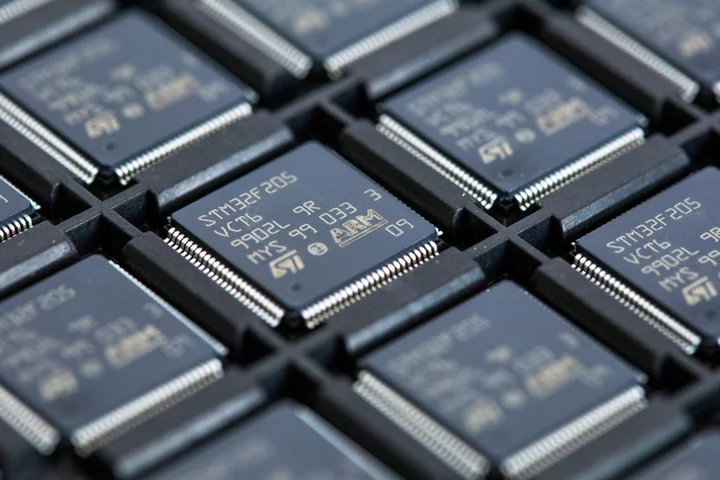Qualcomm Inc. and NXP Semiconductors NV are among a group of chip design firms joining up to form a new company to hasten the development of RISC-V, a rival technology to that of Arm Ltd.
Together with Nordic Semiconductor ASA and German firms Robert Bosch GmbH and Infineon Technologies AG, the semiconductor firms will invest jointly in setting up a new company to promote the open-source RISC-V architecture for chip design. Initially, they will target automotive applications, and the as-yet-unnamed business will be formed in Germany, home to Volkswagen AG and other titans of the car industry. Over time, the new company will expand its remit to mobile and internet-of-things chips, according to a statement on Friday.
Underpinning the effort is concern among global chipmakers about overreliance on SoftBank Group Corp.’s Arm technology, which is ubiquitous across smartphones and expanding rapidly into larger devices, data centers and automotive use. Arm provides the blueprints for the building blocks that go into chips such as Qualcomm’s, and it’s seeking an IPO at a valuation of $60 billion as soon as next month.
“An open collaboration with like-minded companies to continually enhance innovative RISC-V microprocessor IP and ensure a robust and reliable supply of the technology is the ideal answer,” Svein-Egil Nielsen, chief technology officer of Nordic Semiconductor, said in the statement.
The jointly funded company will be an advocate among industry associations and government bodies for the standardization and accelerated development of RISC-V technologies. It’s envisioned to become a single source to enable compatibility between products, provide reference architectures and establish widely used standards.









